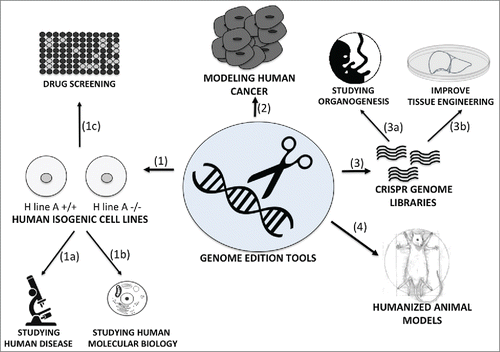Figures & data
FIGURE 1. The use of gene editing tools in research. The ability to edit the human genome can be used in research to manufacture human isogenic cell lines,Citation1 to model human cancerCitation2 to make large-scale genetic screeningCitation3 and to create a new generation of humanized animal models.Citation4 Human isogenic cell lines can represent a powerful tool to study with more accuracy human diseases (1a) human cell and molecular biology (1b) and perform drug screening on controlled genetic backgrounds (1c). Engineered nucleases can also be used to model human cancer, mimicking and correcting translocations induced by human cancer.Citation3 The new CRISPR technology can be applied for large-scale genetic screening to help answering unsolved questions linked to development and organogenesis (3a) and eventually be applied and used in tissue engineering technology (3b). Humanized mice models can facilitate the study of human pathology, human immune function, cancer, cell therapy, drug screening and infectious diseases.

